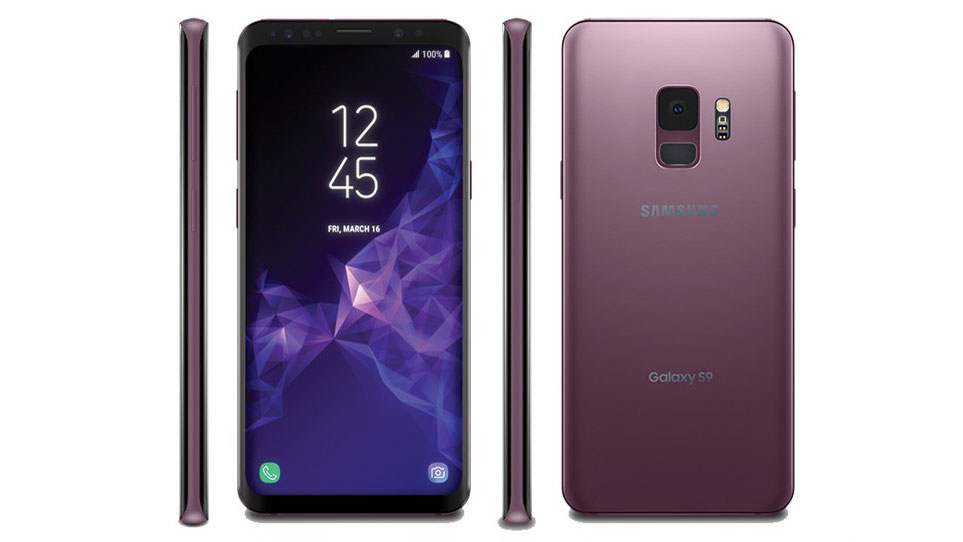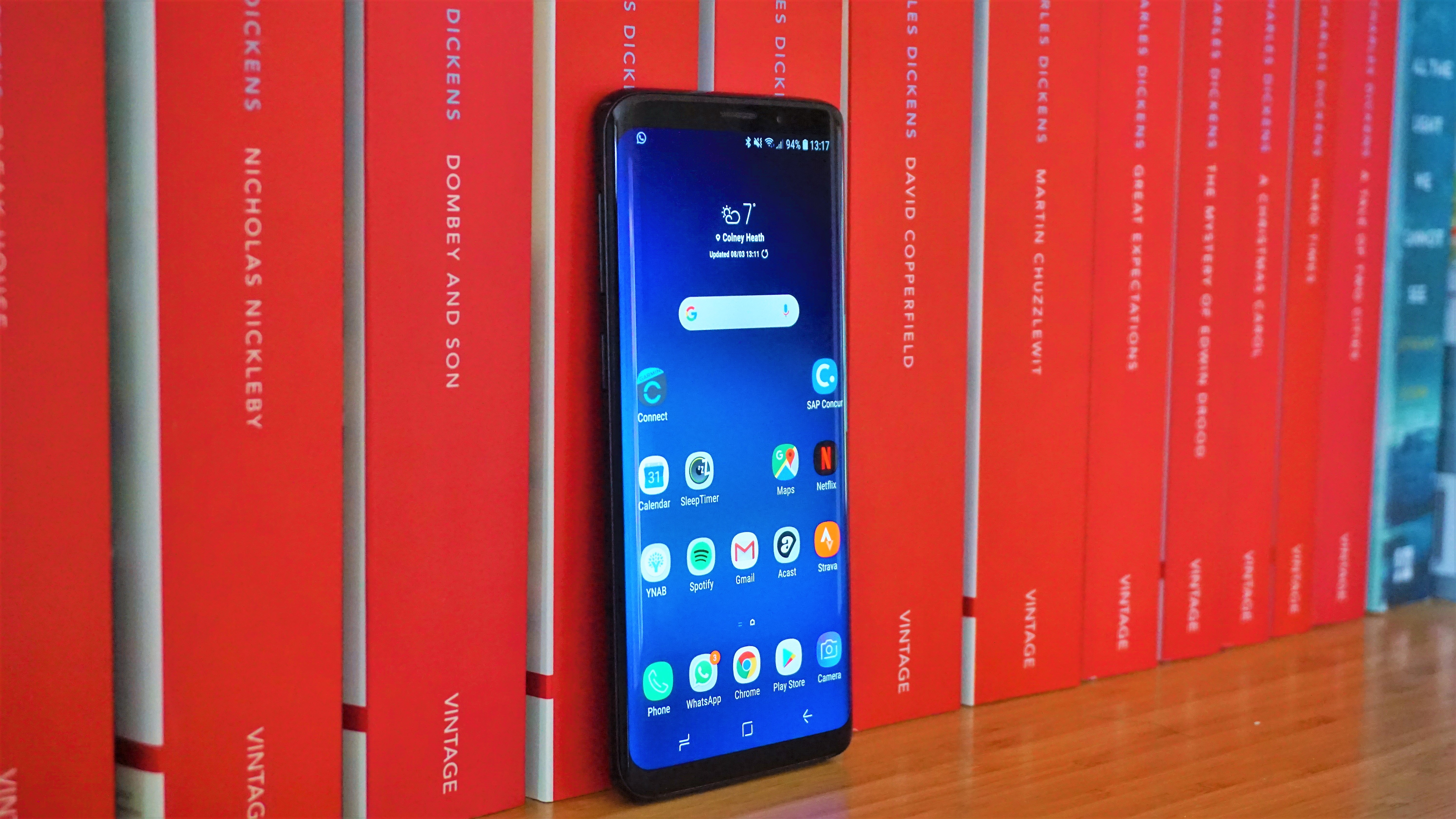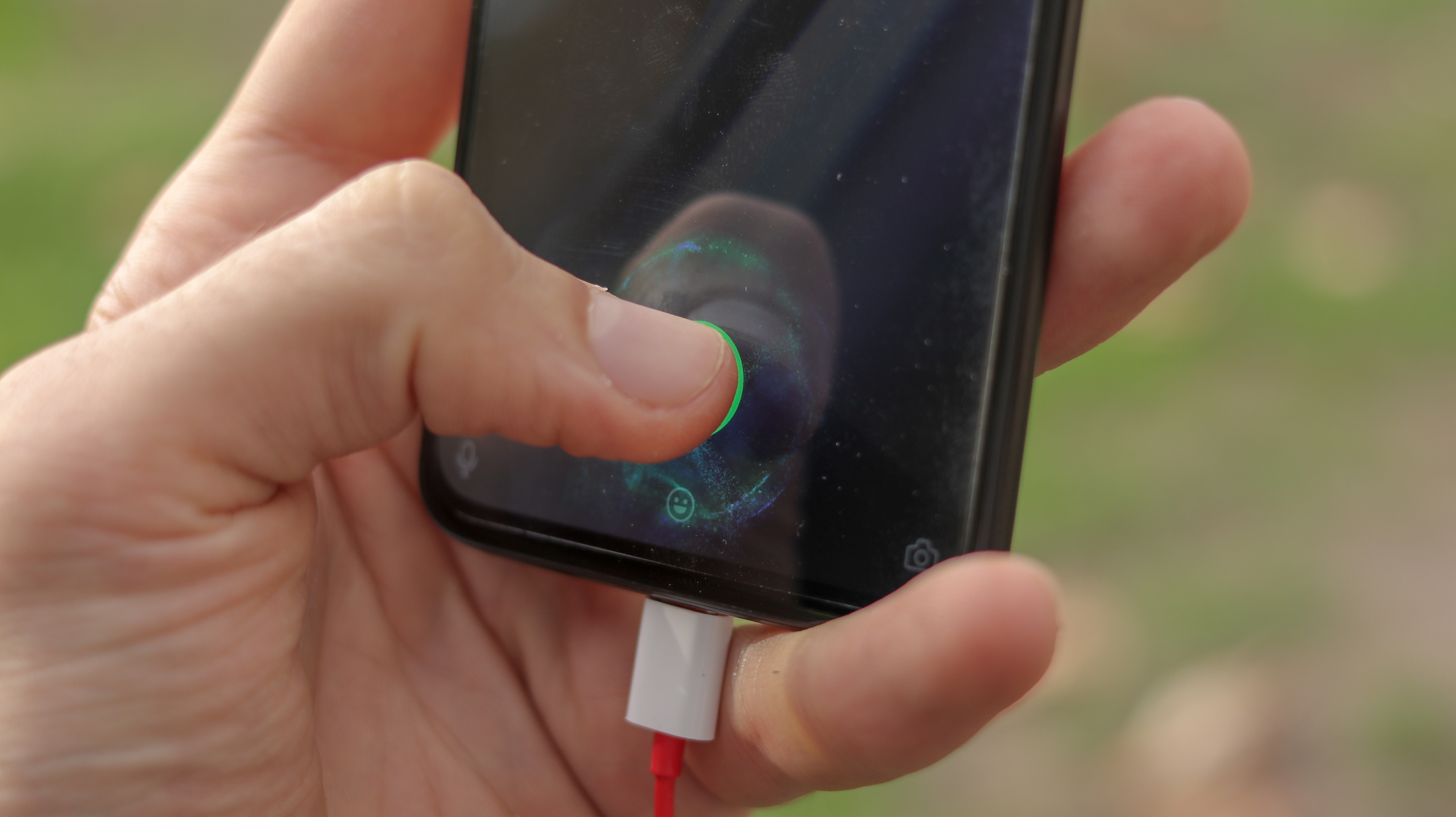OnePlus 6T vs Samsung Galaxy S9: which is better?
The aspiring favorite, or the seasoned standby?

We've just heard about the OnePlus 6T, a new phone that has a few notable upgrades on the lauded OnePlus 6. Its beefed-up specs and features, along with the first in-screen fingerprint scanner in the US market, make it a real contender to challenge pricier devices.
While it may not be able to go toe-to-toe with high-priced flagships iPhone XS or Google Pixel 3, the 6T could compete against phones in the next-highest price tier.
So we’ve pitted the 6T against a suitable rival, the Samsung Galaxy S9, to see where the scrappy upstart stands in comparison with the king of modest flagship smartphones.

Design
The Samsung S9 is the smaller of the pair at 147.7 x 68.7 x 8.5mm and 163g. Compare that to the OnePlus 6T at 157.5 x 74.8 x 8.2mm (barely larger than the OnePlus 6 to include the in-screen fingerprint sensor) and a slightly heavier 185g.
Each phone has a glass back and glossy finishes, though OnePlus 6T also has a matte texture, but that’s it for variety. That's unlike the array of colors that the Samsung S9 comes in, as you can only get the 6T in black (for now).
On the rear, the S9 has a fingerprint sensor below its camera while the 6T doesn’t: the new OnePlus phone’s notable feature is an in-screen sensor embedded in its front. In our testing, this worked really well.
The phones also contrast in their physical button layout. The S9 has its much-maligned dedicated Bixby button on the left side, which we occasionally accidentally pressed when toggling volume or sticking the phone in our pockets. The OnePlus 6T retains its predecessor’s three-position switch on the right side to shift between ring, vibration and silent mode, a convenience that’s rare in today’s phones.
Sign up for breaking news, reviews, opinion, top tech deals, and more.
Catch-all comparisons: The OnePlus comes with dual SIM capability, and so does the S9 - unless you’re buying one in the US, which is single-SIM only. The S9 has an official IP68 water and dust protection rating, while you’ll just have to take OnePlus’ word for it that the 6T is waterproof enough. Oh, and there’s one other big difference: the 6T lost its headphone jack, while the S9 still has one.
As with many Android smartphones, both phones appear so similar that it’s hard to give one an edge over the other, but the S9 has a slightly classier look, keeps its headphone jack and is available in a plethora of colors. The edge goes to Samsung’s phone, unless you absolutely have to have the largest device.

Display
Speaking of size, there’s a real difference between the two phones, though that doesn’t tell the whole story.
The Samsung S9 has the smaller screen at 5.8 inches, but its AMOLED display comes in high-resolution Quad HD+ (2960x1440), which reaches an impressive 570 ppi pixel density.
The OnePlus 6T has a bigger 6.41-inch 19.5:9 AMOLED display, though its 2340x1080 resolution manages only 402 ppi.
You face a dilemma: better resolution or larger screen size? But the better question is, will you even notice? Possibly, as the S9 has one of the sharpest screens out there, and in side-by-side comparisons, the Samsung display was admittedly crisper. But you have to squint to see it.
The other differences are more stylistic. The S9 display comes with Samsung’s signature curved edges, which don’t just look cool - you can also enable gesture controls centered around these glossy margins, though you might forget about them (we did).
Then, of course, there’s the notch issue. The S9 doesn’t have one, though it’s essentially just blacked out the areas adjacent to the front-facing camera. The 6T has a notch, though it’s smaller than the vanilla OnePlus 6: they shifted around a sensor so the screen hugs the front camera closely. In any case, you can black out the “ears” adjacent to the camera if you crave a notchless life.
All told, the S9 wins this round, though the OnePlus 6T didn’t underperform by any means. It should be noted that the S9 also works with the Gear VR and Google VR setups, while it’s unclear if the 6T works with any VR setup. That’s not something everyone will care about, but it is added functionality.

OS and power
While Samsung has taken its time slowly rolling out Android 9 Pie in different alpha and beta waves for testing, OnePlus 6T launches with it already installed. While we haven’t played around much with the updated OS on the phones, if newest is best for you, the 6T might have the edge.
But if we’re talking about brand OS overlays, that’s up to your taste.
The S9 comes with the suite of Samsung apps and interface, which doesn’t look to have changed too much for Android 9. The 6T, on the other hand, comes with the expected minimalist selection of OnePlus apps, which is better for the user that prefers third-party programs in a lightweight interface.
Performance-wise, the 6T comes packed with an octa-core Snapdragon 845 chip, and so does the Samsung S9 - but only in certain markets (including the US). In the EMEA regions, the S9 comes packed with the more powerful, Samsung-developed Exynos 9810 processor. The S9 only comes with 4GB of RAM, while the 6T can be bought with either 6GB or 8GB of RAM.
Going by Geekbench 4 reports, the S9 (Exynos 9810 edition) scored a respectable 8,721 points, which in our testing puts it only below a handful of newer Android phones as well as Apple’s iPhone X and iPhone XS. The new 6T, on the other hand, scored 8,846 on our Geekbench 4 tests.
The capacity of the 6T’s 3,700mAh battery surpasses the 3,000mAh battery in the S9. Just how much battery life the former has beyond the latter won’t be clear until we do some more testing with the two phones together.
Given its edge in specs, performance, and the fact that one phone already has Android 9 Pie while the other is taking its time rolling the new OS out, we’re giving this section to the OnePlus 6T.

Camera
The camera is where many midrange phones cut corners, but both the S9 and OnePlus 6T have respectable performance from very different setups.
The Samsung S9 packs only a single 12MP lens, but it’s dual aperture, and can shift between f/1.5 (for lower-light shots) and f/2.4 automatically (for brighter scenes). This works cleverly, but you can only get so much performance out of one lens.
The 6T has two lenses, a 16MP main and 20MP sensor, both at f/1.7. While it took great photos, users complained about poor low-light performance, so OnePlus added the Nightscape mode to address those concerns.
The S9 certainly has the edge in slow-motion footage: it’s capable of capturing 960fps at 720p for breathtakingly slow video (like, even more drawn-out than those slow-motion shots in Inception), Meanwhile, the 6T manages a respectable 480fps at 720p, or 240fps at 1080p.
Honestly, both phones have enough pros and cons that it might be up to taste. The S9 likely has an edge due to the more robust Samsung camera interface.

Price and availability
By price, the 6T has a significant advantage, as it starts at $529 / £499 for 6GB of RAM / 128GB of storage, $579 / £529 for a bump up to 8GB of RAM with the same 128GB space and a top version for $629 / £579 with 8GB of RAM and 256GB storage.
The S9 is priced higher, starting at $719 (£739/AU$1,199) for 64GB of storage with 4GB of RAM and climbing up to $839 for 256GB of space. But the phone has been out long enough that you can likely find a discounted unlocked version (perhaps on our handy US deals and UK deals pages.
It’s a bit easier to get your hands on a Samsung S9, which most carriers sell and support. It launched back in March, so even finding an unlocked phone shouldn’t be too hard.
The OnePlus 6T... not so much. T-Mobile is the only carrier selling the phone in the US, which goes on sale in stores and online on Nov 1 (or for European customers, Nov 6). And T-Mobile will only sell the 8GB RAM, 128GB storage model in mirror black for $629. Verizon will support the 6T, but not sell it.

Takeaway
The Samsung Galaxy S9 and OnePlus 6T are pretty evenly matched, which is a testament to OnePlus as the underdog here. But in terms of sheer value, we’d give the match to the 6T.
Of course, there’s a lot more going on than a simple cost-to-specs equation. The OnePlus lacks the heavily-refined Samsung interface that packs a lot of bells and whistles in its fancy frame. The 6T also has a notch and also dispensed with its headphone jack.
In other words, it’s kind of a photo finish between these similar-looking but notably different phones, and the final boost may come down to which interface you prefer and which features you can’t live without.
Think hard on whether you want the Samsung S9’s very seasoned setup or if pure capability at a seriously affordable price tips your hand in favor of the OnePlus 6T.
- Be sure to read our full OnePlus 6T review

David is now a mobile reporter at Cnet. Formerly Mobile Editor, US for TechRadar, he covered phones, tablets, and wearables. He still thinks the iPhone 4 is the best-looking smartphone ever made. He's most interested in technology, gaming and culture – and where they overlap and change our lives. His current beat explores how our on-the-go existence is affected by new gadgets, carrier coverage expansions, and corporate strategy shifts.